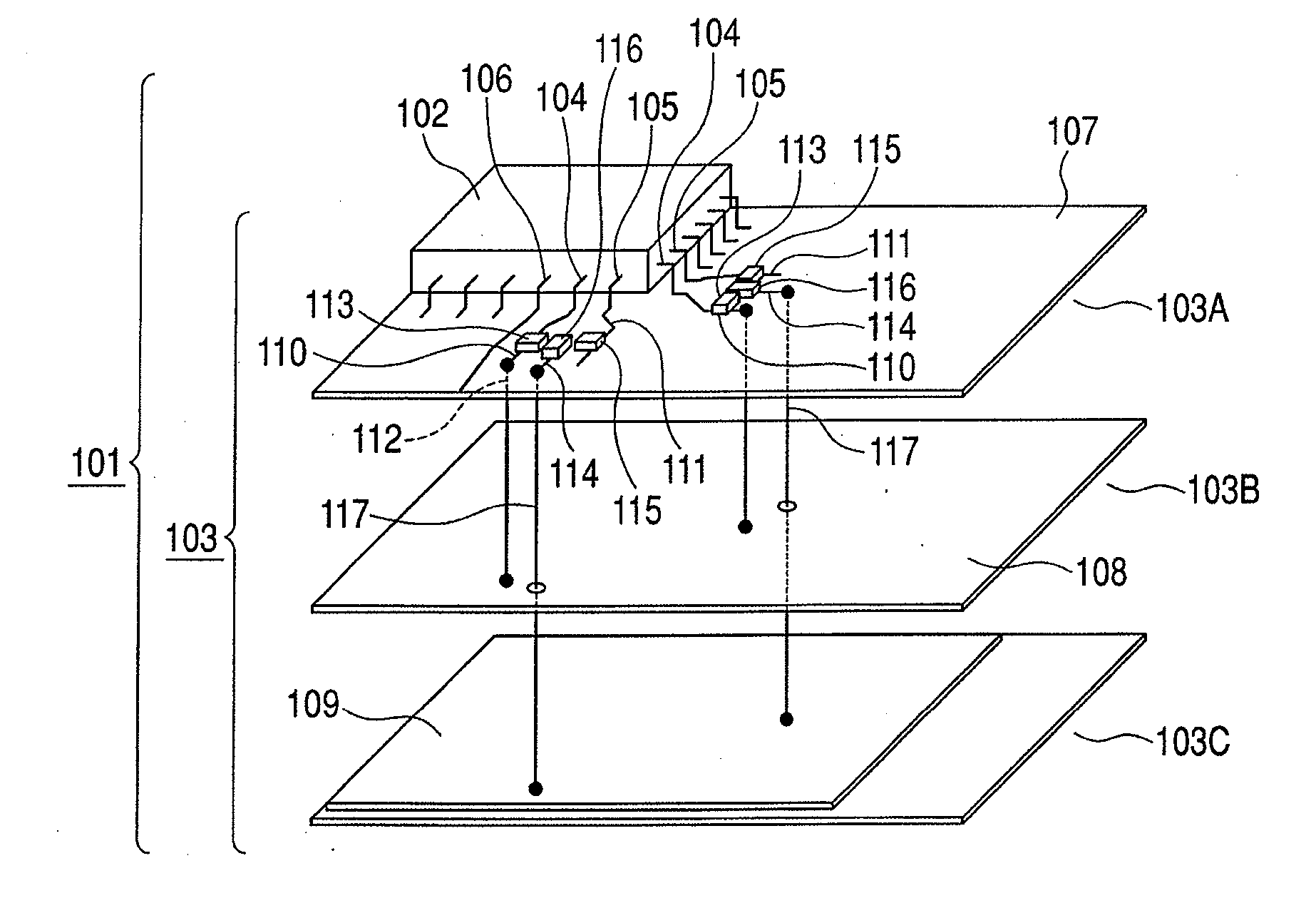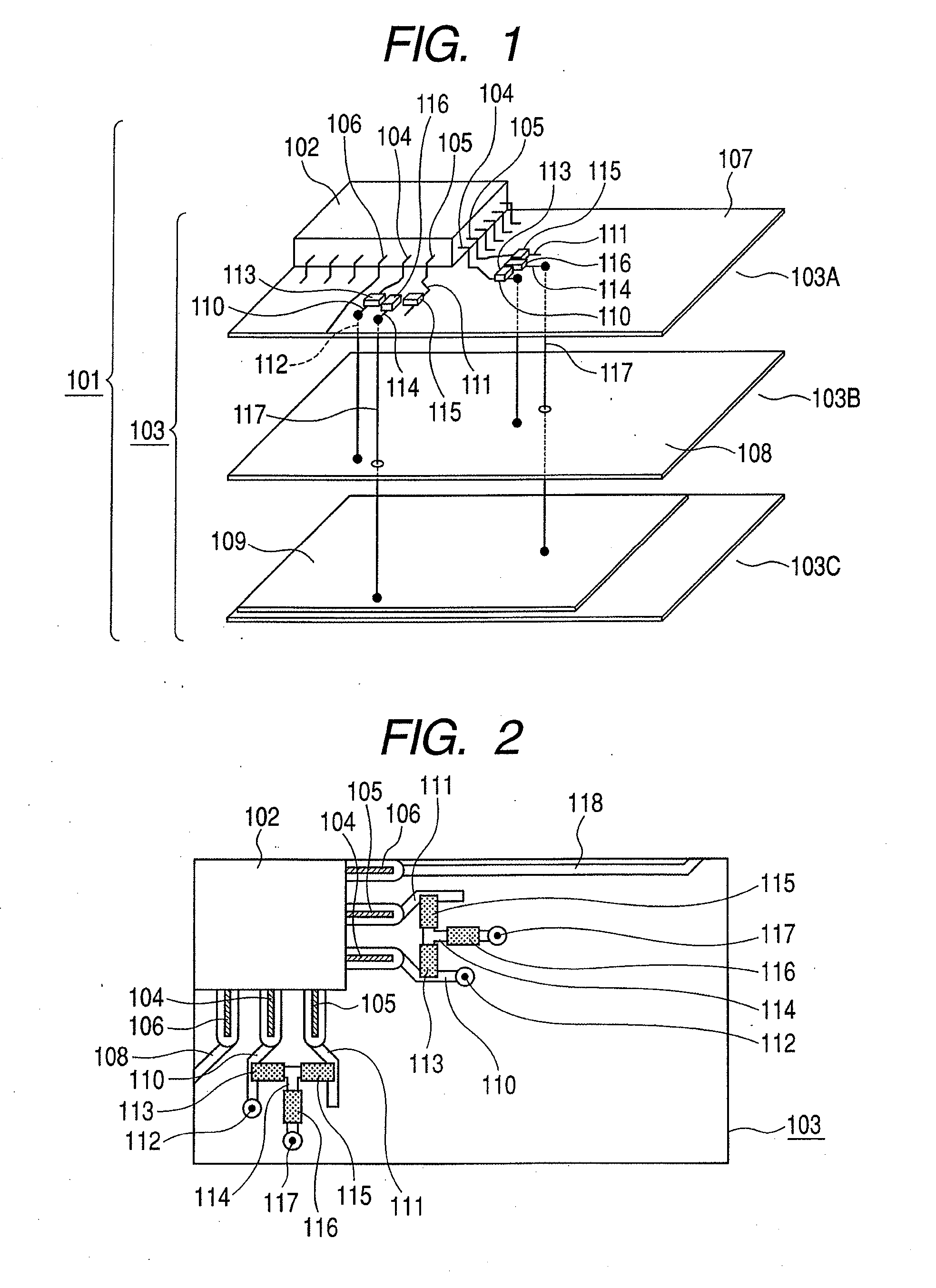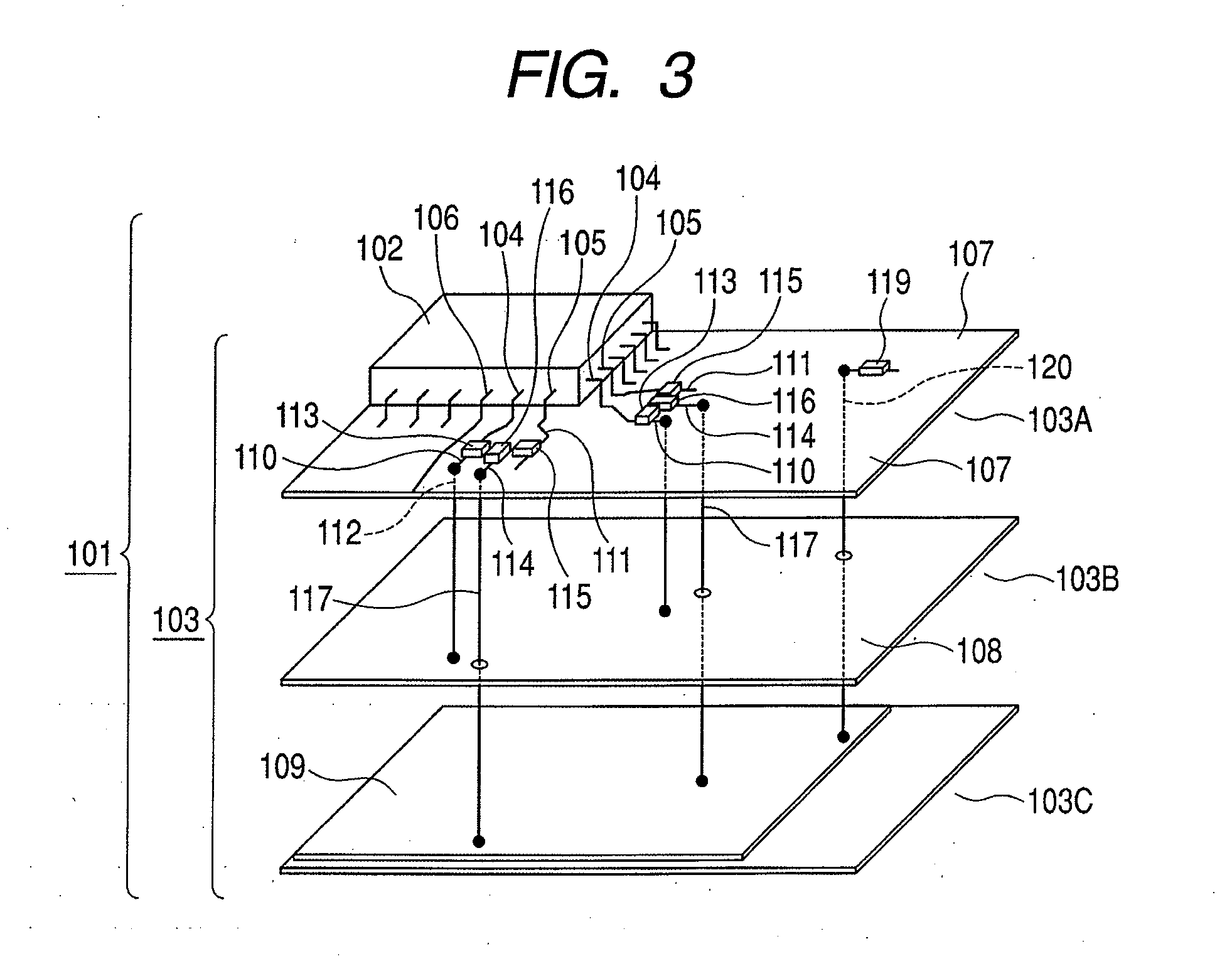Printed circuit board
a technology of printed circuit boards and circuit boards, applied in the direction of cross-talk/noise/interference reduction, electrical apparatus construction details, etc., can solve the problems of lsi power source or ground potential changes, erroneous operation of an lsi, signal output timing changes, etc., and achieve the effect of inexpensive configuration
- Summary
- Abstract
- Description
- Claims
- Application Information
AI Technical Summary
Benefits of technology
Problems solved by technology
Method used
Image
Examples
first embodiment
[0034]FIG. 1 is a schematic view of a printed circuit board according to a first embodiment. FIG. 2 is a plan view of the main part of the printed circuit board shown in FIG. 1, and shows in detail the part on which a power source terminal 104 and a ground terminal 105 of a semiconductor integrated circuit 102 are mounted.
[0035]The printed circuit board 101 includes the packaged semiconductor integrated circuit 102 and a multilayer printed wiring board 103. The semiconductor integrated circuit 102 in a QFP (Quad Flat Package) has the above-mentioned power source terminal 104, the ground terminal 105, and a plurality of signal terminals 106. The printed wiring board 103 is a multilayer (two-layer) board made of FR4. A first layer 103A has a ground plane 107. A second layer 103B has a power source plane 108 that supplies a reference potential. A third layer 103C has a plane conductor 109 that is not connected to the power source plane 108 and ground plane 107 directly. The printed wir...
second embodiment
[0044]FIG. 4 is a schematic view of the main part of a printed circuit board according to the second embodiment.
[0045]A printed circuit board 201 includes a semiconductor circuit 202 and a multilayer printed wiring board 203. The semiconductor integrated circuit 202 contained in a BGA (Ball Grid Allay) has a power source solder ball 204, a ground solder ball 205, and a plurality of signal solder balls 206. The printed wiring board 203 is a four-layer board made of FR4. The first layer 203A has a ground plane 207. The second layer 203B has a power source plane 208 that supplies reference potential. The third layer 203C has a plane conductor 209 that is not connected to the power source plane 208 and ground plane 207 directly. The fourth layer 203D forms the back of the printed wiring board 203, and various electronic components are mounted on this back.
[0046]Perspectively viewing the printed circuit board 201 from a vertical direction, it is preferable that the area of the plane cond...
third embodiment
[0052]FIG. 6 is a perspective view of a printed circuit board according to a third embodiment. FIG. 7 is a graph representing the radiation noise reduction effect in the third embodiment.
[0053]The printed circuit board 301 includes a semiconductor integrated circuit 302, a first printed wiring board 303 and a second printed wiring board 304. The semiconductor integrated circuit 302 and the first printed wiring board 303 are electrically and physically connected by a bonding wire 305 and covered by a resin mold 306. The first printed wiring board 303 and the second printed wiring board 304 are connected by a power source solder ball 319 and a ground solder ball 321.
[0054]The power source of the semiconductor circuit 302 and the power source pattern 309 of the first printed wiring board 303 are connected by a power source bonding wire 307. The ground of the semiconductor integrated circuit 302 and the ground pattern 310 of the first printed wiring board 303 are connected by a ground b...
PUM
 Login to View More
Login to View More Abstract
Description
Claims
Application Information
 Login to View More
Login to View More - R&D
- Intellectual Property
- Life Sciences
- Materials
- Tech Scout
- Unparalleled Data Quality
- Higher Quality Content
- 60% Fewer Hallucinations
Browse by: Latest US Patents, China's latest patents, Technical Efficacy Thesaurus, Application Domain, Technology Topic, Popular Technical Reports.
© 2025 PatSnap. All rights reserved.Legal|Privacy policy|Modern Slavery Act Transparency Statement|Sitemap|About US| Contact US: help@patsnap.com



